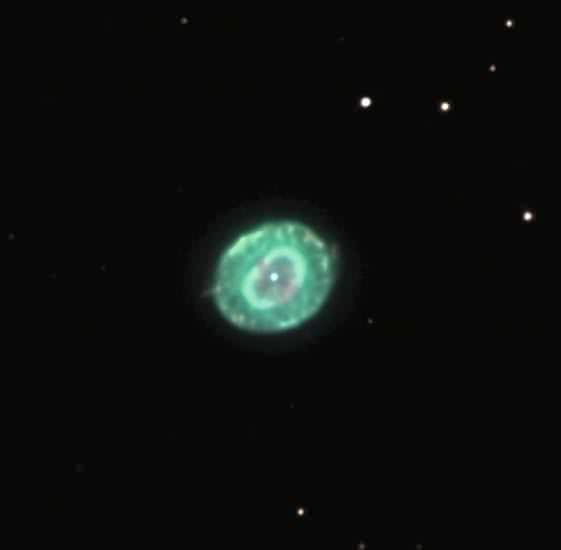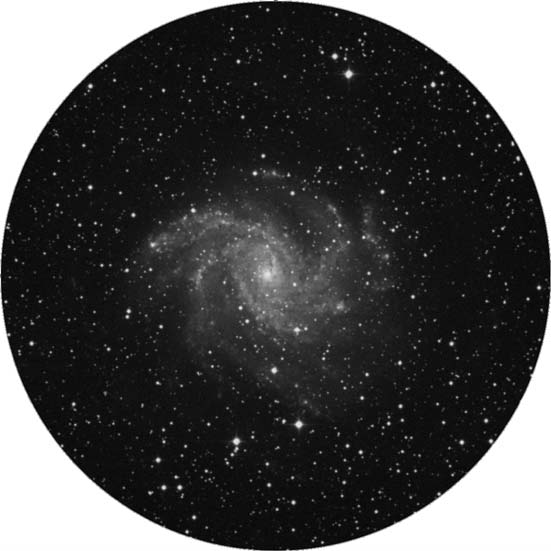Greetings, fellow SkyWatchers! It’s an awesome weekend forecast for many of us attending Fall Star Parties, and all over the world we’re looking forward to moonless nights and the fellowship with our brother and sister amateur astronomers. If you’ve never been to a star party, try the Goggle pages for information… you just might find one going on near you! In the meantime, let’s have us a “Snowball” fight, chase some galaxies and ponder double stars! I’ll see you in the night…
Friday, September 18, 2009 – One of the most interesting features of the autumn sky is how slowly the stars and constellations seem to proceed across the heavens. This is only an illusion, since skydark arrives earlier each night (after summer solstice in the Northern Hemisphere), making the progress of the constellations across the sky seems to ‘‘freeze.’’ Tonight, Capella can be seen rising to the northeast just as Antares settles southwest. Four planets—Jupiter, Pluto, Neptune, and Uranus—are still above the horizon, with Jupiter now very low to the west-southwest. Descending to the northwest is Ursa Major, the ‘‘Big Dipper.’’ Across the sky is Piscis Austrinus, and lonely but bright Fomalhaut is beginning its rise. Seven stars of the first magnitude now grace the heavens. Against this backdrop, one of the darkest skies of the month is now upon us. It’s the New Moon…
Let’s have a look at another fine planetary nebula—NGC 7662. At 9 magnitude, this one is more commonly known as the ‘‘Blue Snowball’’ and can be found about three finger-widths east of Omicron Andromedae, or a little less than a handspan northwest of Alpha Pegasi (RA 23 25 54 Dec +42 32 06).
Similar in size to M57, even low power with a small scope easily reveals the planetary nature of this very fine study. Power up and you’ll discover that the annulus of this roughly circular planetary is definitely brighter inside than out. Large telescopes will highlight NGC 7662’s blue coloration and reveal a bright inner globe surrounded by a faint outer ring.
Saturday, September 19, 2009 – On this date in 1848, William Boyd was observing Saturn and discovered the planet’s eighth moon, Hyperion. If you’re out before sunset, some lucky stargazers are going to discover that the slender crescent Moon is about to occult Mercury! Check the Resources in this book and IOTA for locations and dates. Then check them both out in binoculars!
Would you like to try for another pair? Then wait until the skies are fully dark and head north for a galaxy and cluster pairing—NGC 6946 (RA 20 34 51 Dec +60 09 18) and NGC 6939 (RA 20 31 30
Dec +60 39 42).
Located in western Cepheus, you’ll find them about a finger-width southwest of Eta.
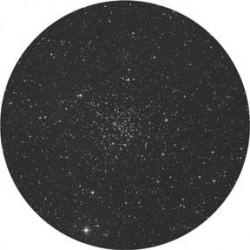 Discovered by William Herschel on September 9, 1798, 10 million-light-year-distant face-on spiral NGC 6946 spreads itself pretty thin in modest instruments. Lacking a bright core, this oval mist orients southwest to northeast. Larger telescopes will reveal traces of rotating spiral arms, especially in the southwest. This galaxy would appear extraordinary if we weren’t looking through Milky Way obscuration to view it! Through smaller scopes, northwestern open cluster NGC 6939 appears like a tight little formation of 11th and 12th magnitude stars similar in pattern to a very small M11. It resolves well in larger scopes.
Discovered by William Herschel on September 9, 1798, 10 million-light-year-distant face-on spiral NGC 6946 spreads itself pretty thin in modest instruments. Lacking a bright core, this oval mist orients southwest to northeast. Larger telescopes will reveal traces of rotating spiral arms, especially in the southwest. This galaxy would appear extraordinary if we weren’t looking through Milky Way obscuration to view it! Through smaller scopes, northwestern open cluster NGC 6939 appears like a tight little formation of 11th and 12th magnitude stars similar in pattern to a very small M11. It resolves well in larger scopes.
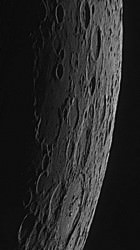 Sunday, September 20, 2009 – Today we recognize the passing of cosmonaut Gherman S. Titov in 2000; Titov was not only the second human in space but also the youngest! Perhaps when he was orbiting Earth in Vostok 2 he had a chance to see the Moon. Why don’t we join him? Tonight, your lunar mission is to journey to the edge of the east limb and slightly south of central to identify crater Humboldt. Seen on the curve, this roughly 200-kilometer-wide crater holds a wealth of geographical details. Its flat, cracked floor has central peaks and a small mountain range, as well as a radial Rille structure. If libration and steadiness of skies are in your favor, power up and look for dark pyroclastic areas and a concentric inner crater.
Sunday, September 20, 2009 – Today we recognize the passing of cosmonaut Gherman S. Titov in 2000; Titov was not only the second human in space but also the youngest! Perhaps when he was orbiting Earth in Vostok 2 he had a chance to see the Moon. Why don’t we join him? Tonight, your lunar mission is to journey to the edge of the east limb and slightly south of central to identify crater Humboldt. Seen on the curve, this roughly 200-kilometer-wide crater holds a wealth of geographical details. Its flat, cracked floor has central peaks and a small mountain range, as well as a radial Rille structure. If libration and steadiness of skies are in your favor, power up and look for dark pyroclastic areas and a concentric inner crater.
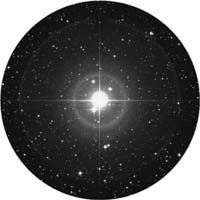 Now, let’s have a look at Beta and Gamma Lyrae, the lower two stars in the ‘‘Harp.’’ Beta is actually a quick-changing variable, which drops to less than half the brightness of Gamma in about 12 days. For a few days, the pair will seem of almost equal brightness, and then you will notice the star closest to Vega fade away. Beta is one of the most unusual spectroscopic stars in the sky, and it is possible that its eclipsing binary companion may be the prototype of a ‘‘collapsar’’ (yep, a black hole!), rather than a true luminous body.
Now, let’s have a look at Beta and Gamma Lyrae, the lower two stars in the ‘‘Harp.’’ Beta is actually a quick-changing variable, which drops to less than half the brightness of Gamma in about 12 days. For a few days, the pair will seem of almost equal brightness, and then you will notice the star closest to Vega fade away. Beta is one of the most unusual spectroscopic stars in the sky, and it is possible that its eclipsing binary companion may be the prototype of a ‘‘collapsar’’ (yep, a black hole!), rather than a true luminous body.
Enjoy your weekend!!
This week’s awesome images (in order of appearance) are: NGC 7662 (credit—Adam Block/NOAO/AURA/NSF), NGC 6946 and NGC 6939 (credit—Palomar Observatory, courtesy of Caltech), Crater Humboldt (credit—Ricardo Borba) and Beta Lyrae (credit—Palomar Observatory, courtesy of Caltech). We thank you so much!!


